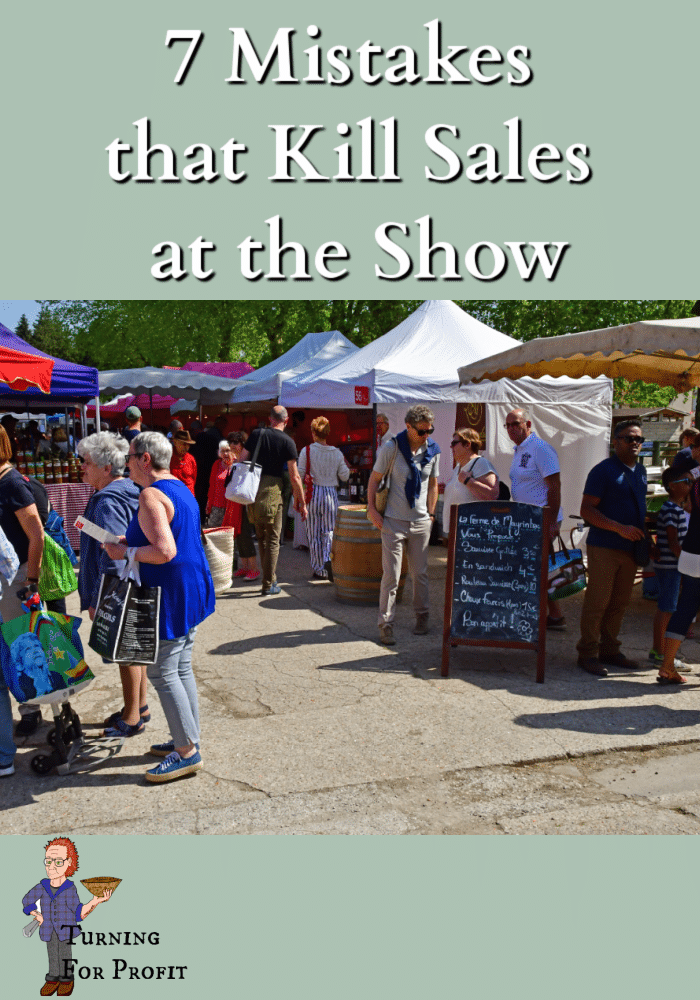
1. Having a Closed Attitude
I was there. I saw them across the aisle from me. Husband and wife are sitting in low chairs behind a table piled high with textiles. Knitted dish cloths, stacks of towels, napkins, and other kitch create a mountain between the customer and the seller. As the day wears on the arms are comfortably crossed over their chests. Smiles turn to frowns. Any customer visiting the booth now encounters the “attitude”. The presentation of items in the booth, the low chairs, and the physical posture communicates to the customer – don’t bother me. This is a bad fair. I’m not selling as much as I want to. I’m in a bad mood. This works very well for sending the customers on their way. Piles of products are an actual physical barrier while the crossed arms are an implied barrier. Both of these need to be taken down. Don’t make these mistakes in your booth.
You can do better:
Open up your presentation. Don’t sit behind the table, instead stand beside your table and invite customers into your space. Your posture and the physical condition of your booth need to be welcoming and inviting to your customers. No matter how your day has gone the next customer needs to feel as important to you as your first customer. Uncross your arms, smile, and make eye contact.
2. Operating in the Dark
The venue has brilliant halogen lighting whose glare reaches all vendors as you set up your booth. It seems bright enough so you don’t bring any lights. As you are setting up you see student lamps, LEDs and mini fluorescent lights being attached to other booths. Then shortly after the event begins the lights are turned down to create ambiance for the shoppers. Lighted booths look warm and inviting. Those without lights recede into the wall space.
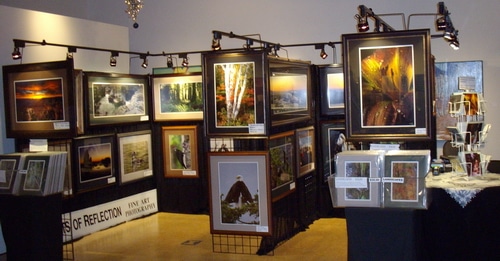
One of our first Christmas Fairs caught me off guard on this one. Located at the turn of the outside aisle, I thought we had a good visibility for attracting customers. While in the booth I could see people a long way straight ahead and to the right. The place was packed with shoppers. My wife left during a quiet moment and I reflected on why so few people were stopping to see our lovely products. When she returned she said “We’ve disappeared!” At her suggestion I walked away from the booth and returned. She was right, nothing was standing out about our average looking, dusky corner of the venue.
You can do better:
Turn on the lights! Without lights in our booth to highlight and sparkle our wares, we became the same consistency as the back ground. Nothing stood out or attracted the customer to our booth. We now use lighting at all indoor fairs. It is amazing how we stand out especially when others are still in the dark.
3. Making the Most of My Time
The artist had beautiful vibrant acrylics that attracted people into her booth. No lighting, but the colors on the paintings jumped off the canvases so it was a minor flaw in booth design. She sat behind a table, shoulders bent and head down over a book, “The Emotionally Abusive Relationship.” And she sat there for two days. She made a few small sales of post cards and a she sold a couple of paintings. There wasn’t a lot of conversation going on, but she did finish reading her book. From the customers’ perspective what do they see? They see a vendor with her head inclined to a book, moving her head slowly from left to right as she moves methodically through the pages. There is no recognition or eye contact until the customer connects with the vendor. The customer has to make the first move. In the selling game the customer usually quits and there is no game, these are challenging mistakes.
You can do better:
This time is for the customers. No reading allowed. If there is no one in the booth, rearrange your display and act engaged. Connect with the customer even before they enter your booth. Make eye contact. Ask a question that can’t be answered by “yes” or “no.” “That’s a lovely sweater that you are wearing. Where did you get it?” Standing, or sitting on a stool, puts you at the same level as the customer. They are usually not looking down or up at you. Keeping your arms at your side gives you an open stance to your posture. And if you absolutely must read — then please pick the cover of your book carefully!
4. Shadowing the Customer
We’ve all been there. Enter the clothing store because a sweater in the window caught the eye. Immediately the sales clerk makes walks purposefully toward you. You avert your eyes, knowing what’s coming, and hoping to be left alone to browse. “Can I help you?” the guy asks? “No, thanks, just looking” is the standard reply. We all know the script well. So now you know you’re being watched. You touch a few suit jackets and decide there’s nothing really special in that store and move on.
Same thing happens at the craft show, but this time you are the sales person. As the customer enters the booth you watch them, maybe make eye contact. Now you know you need to say something, but somehow can’t bring yourself to start the script that is always answered with, “No thanks.” Are you silent until the customer initiates the conversation? They aren’t going to. Did you read #3? If the customer has to talk first they’ve probably moved on to the next vendor. So let’s not be silent. Ask the first question.
You can do better:
Now what question do you ask? “Do you have any questions?” Seems reasonable, you are the vendor and you know your product. You’ve just put the ball back in their court with a yes/no question. A quick “no” leaves you as the silent shadow again. Try to avoid asking questions that are answered with a quick “yes” or “no.” By the way, I’m still working at this one, its one of the hardest mistakes to avoid. Ask questions that open a discussion or introduce a special aspect of the product that they are looking at. If you recognize the person you could mention that you remember them from before and ask how are they doing this year? Engaging the customer increases your ability to suggest ways that your products meet their needs or solve a problem that they have. And when products solve problems they are more likely to be sold.
5. Customer Hide and Seek
The vendor is a fiber artist with tall walls that display her work. She sits behind the walls on a chair and chats to her customers and other vendors, while peeking out from the back of the booth. But after the first two hours of the show opening, she’s gone. She walks around visiting with all her old friends and leaves her booth to fate. While she’s visiting with the other vendor’s she glances back to see if anyone is looking for her. Not seeing anyone in the booth, she keeps up the banter across the aisle. The other vendors hear about her grand children, the problem her son had with bullies at school, or the high price of hydro this year. Since she is on Etsy and Facebook, she has a following and has good sales, in spite of her “games”.
You can do better:
Be available. While the customer would rather not be pressured, they feel very uncomfortable alone in a booth. They need to know you are there and that they can talk to you if needed. If you are talking to vendors nearby, and you can see the customer, they may not see you or know that you are connected with the booth. Head back to your booth. It is a real balancing act to judge the distance that is comfortable for both vendor and customer. 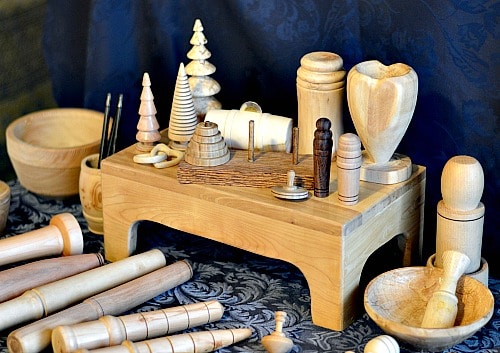
6. Hiding the Merchandise
The woman sells table runners, place mats, napkins, and tea towels. To save money she takes the smallest vendor space available, a 10 x 8 space. Within the space are two tables and a clothing display rack. The table runners are on hangers and stuffed onto the display rack. There are three piles of place mats stacked about 30 high and numerous columns of napkins. She maximizes the available space. Tables are piled high with items for sale (see #1). Racks of table runners are packed so tight that three fall off when her customer takes one off the rack. There are lots of options and color choices for all customers to see and appreciate. A full booth or table will mean the customer is going to find what they want here. However, it may take hours to look through everything. The customer may become overwhelmed with the glut of choice. Overwhelming the customer is one of the most common mistakes.
You can do better:
Making your customers work to find the right item is counter productive. You need to strike a balance between product availability and choices. This year we had a fair where we were able to expand into more area to fill the space out. I thought that it might be too sparse because I’m always trying to squeeze more items out and on display. My customers indicated that they appreciated the extra space in order to examine the products that attracted them and they weren’t crowded out by other shoppers.
This is definitely a challenge in a 10 by 10 booth space. Sometimes samples on the table with more in bins underneath works to satisfy both presentation and selection. Even when you are cramped for space take an item or two off the table and make it look like some items have already sold. If the display looks perfect the customer doesn’t want to wreck it. Usually no one will take the last item. No one wants to seem greedy. So restock as the day goes on.
7. Grunge Dressing
Greeting your customers in a t-shirt and jeans might work at an outdoor market especially if you are selling vegetables, but it won’t impress them at a Christmas Fair. You don’t need to wear a tuxedo either. Be reasonable, pressed, clean, and presentable. It is a balancing act between being comfortable and presentable. Take the time to evaluate other vendors at your events. How are they dressed? Are they attractive or a bit too casual? Even if you feel like the Grinch, you don’t need to look like one.
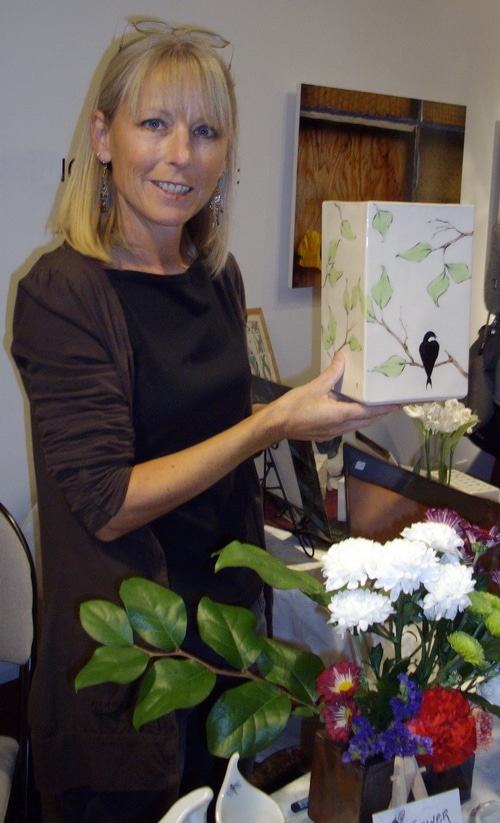
You can do better:
Dress to suit your product. My friend, Rene sells maple syrup from his family farm in Quebec. He dresses the part of a French Woodsman in a red checked Wool flannel shirt and jeans, with a finger woven sash around his waist. His costume suits his product and adds to the ambiance of his booth. While potter, Sandy-Jo from Potterbees in Grand Forks, BC dresses the part of a business woman at the show. Your appearance has a significant impact on your sales. I was surprised at the sales that occurred when I wore a suit and tie to a Christmas Craft Fair. Believe me your appearance matters.
Moving Forward with Less Mistakes
These 7 mistakes can kill your sales but with a little fore thought you can avoid them. It is hard work to sell your products. You need to be presentable and available to your customers. You should be knowledgeable about what you are selling and excited to share your information with them. While it may seem that I am exaggerating, I’ve seen all 7 mistakes at fairs and craft shows. I have even made a few of these mistakes myself when I was starting out. I hope that by reading this you can avoid these mistakes and improve your sales at the next show.
Additional Craft Show Resources
A craft show is a big event and the excitement focuses on selling at the show. But it takes a lot to do a show. Here are 6 steps to help you organize for your next craft show and beyond. One of the keys to being ready at a show is not forgetting something important at home. At one show I forgot all of my coin. Managed to get through the day but don’t make the same mistakes I did, use a craft show checklist. Not all craft shows or farmer’s markets are created equal. They each have their own unique flavor. Take the time to evaluate your shows and make sure they are the best fit for you and your products. Sometimes it is the mental games that cause me the most frustration. 5 Money Mindset Issues that Woodturners Face looks at how thinking about money impacts your woodturning sales and business. Pricing your product is also a challenge.
When I asked my Facebook group, Woodturning Entrepreneurs, what pricing mistakes they had made, the result was overwhelming that they had set their price too low! Looking at their responses here are 5 Pricing Mistakes that will Cost you More than just Money. I saved the best for last. The most common question that I get asked is “What will sell?” We all want a magic bullet (or product) that will always give us great sales. The answer is actually not that obvious. I hope these articles will help you with your craft shows. Leave a comment and let me know how you are doing and what you are going to do differently in the future.
Turning For Profit
These posts are for you, the woodturner. If you like turning projects or articles related to the business of turning then please sign up for the Turning For Profit newsletter. Generally it comes out once a week and has links to the current articles, a bit on what I am up to, and usually a question for your response. You can sign up on the right side bar or just a little lower on the page. I love wood turning and sharing with you. You can follow me on Facebook as well. Thank you for letting me join you on this woodturning journey. Have fun and remember to turn safely.

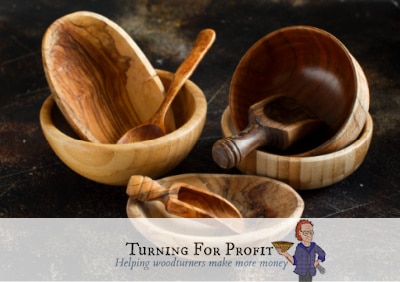

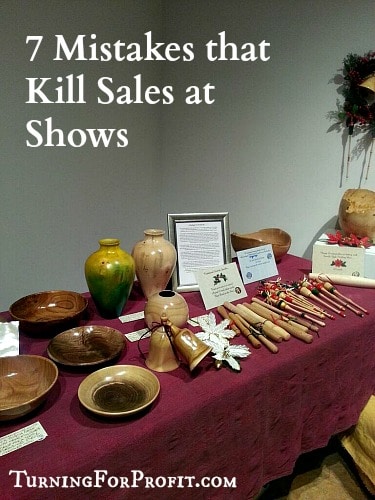
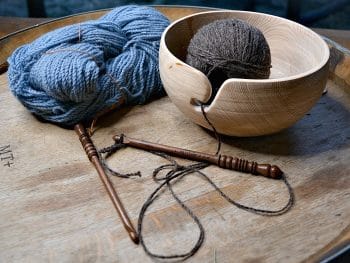
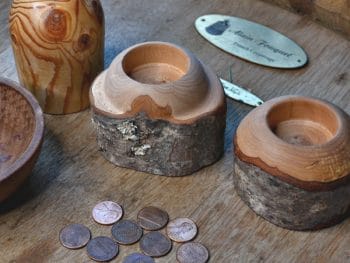

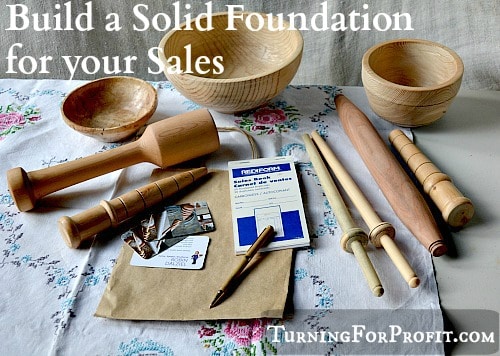
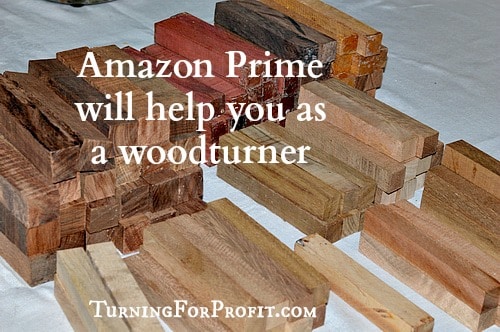
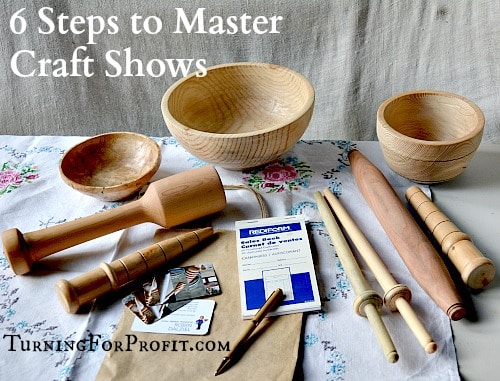







You’ve definitely hit on many of the major deadly sins that I’ve seen vendors at shows commit. Another common one I’ve seen is having a negative attitude. People with a negative attitude aren’t friendly or smiling to the customers or other vendors. They are too busy moaning about how they aren’t getting sales. The other one is leaving early before the end of the show. (which is often another thing done by sellers with a negative attitude) I’ve learned that many times people coming to a show are on a budget of how much they want to spend and want to look at everything before they decide what they want to buy. I can’t tell you how many times I’ve made numerous sales in the last 10-15 minutes before the end when people return to buy something they saw earlier.
Thank you for your extensive comment. It can be a challenge going to shows and a positive attitude is a must.
She did bring this up in one of her 1st points lol
What kind of lights do you recommend? I bought some LED lights but they weren’t bright enough.
To bad that those lights didn’t work for you. You might use them for ambiance lighting. I used desk lamps that clamped to shelving with 60 watt bulbs. I would try to find LED lights that are brighter. I hope you do well at your events.
Have looked into a couple of fairs that would be ideal for me as a novice. However they only offer booths with electricity to established traders/businesses. The ‘artists’ booths are smaller, in a separate less travelled area and you cant choose where you end up. Will be looking for some battery operate lighting but any additional hints on how to stand out would be gratefully appreciated.
Hi Leigh. I would go for some battery powered LEDs. Might need to be creative on that one to make it work. Then I would make sure I have my product at different heights. Finally make sure the booth is welcoming. Many fairs that I went to the vendors sat with the table between them and the customer. Try to make the customer feel welcome in your booth. Let me know how it goes.
We use an Eliminator to plug into for shows without power ! Works great just make sure to fully charge it lol made that mistake once
Thanks. Just to clarify an “Eliminator” is a power source for use during power outages. For Canadians, Canadian Tire carries MotoMaster Eliminator PowerBox® in various sizes. Take the time to check the ratings and total power to see if it would suit the shows you are planning on attending. Bring your own power is a great idea!
I use a Sears unit thats used for emergency jumping a car battery. It holds enough power for 12v lighting all day and has a USB port for your cell phone to accept credit cards.
Great tips! I’ve worked many trade shows over the years, and your pointers are ‘spot-on’!
At several venues in our area, they provide a table and two chairs in each booth. I always told them to keep the chairs. In my mind, I’m there to work, not to sit.
One of the things I tried was to have one of my customers as a co-worker in the booth. Of course, it has to be the right fit: personality wise, the type of show, the product you’re selling and the market you’re trying to reach. But I did find it advantageous to have one of my fans working with me as a salesperson. Just an idea.
Thank you for your comment. Having a second set of eyes in the booth is a great help. Especially if it is a raving fan! Definitely a very personal decision but a very interesting idea.
I’ve started engaging potential customers by saying, “you can pick them up, they don’t bite”… I make plush monsters. Almost everyone I say it to smiles wide and comes closer to my monsters and say “are you sure ?” as they pick up one and laugh. They may not purchase but they always leave my booth with a smile.
That is a great way to connect with your visitors.
I do the same, I make and sell soy candles and smelly jelly. I always say “smells are free”! LOL
I make Stained glass items one is kaleidoscopes, I will sometimes ask (when was the last time that they looked through one!) that does get them over take a look most of the time
I agree with you 100% on artists who don’t welcome their customers. We were next to someone at an art fair and the whole time he sat in his booth reading a book, hardly looking up to greet anyone. Needless to say, he didn’t have very many sales.
We always greet our customers to make them feel comfortable. We break the ice by asking how their day is going. 99% of them respond positively and feel that we are friendly, therefore making them feel more at home in our booth.
So what do you do when you avoid all of the above, and you get plenty of really positive feedback about your stall and your products, but you still don’t get any (or enough) sales? That’s what happened to us last year, and I can’t afford to carry on pumping money into shows that make a loss.
I have struggled with the same problem. I don’t know of a perfect solution but what you need to do is try to find shows that are good for you, your products, and the cost of attending. This post has some of these ideas. https://www.turningforprofit.com/craft-show-evaluation-template/
I hope it helps. We did a major show in Kelowna, BC and didn’t break even. However a small art and craft show in Oliver, BC was extremely good. Keep looking I’m sure you will find them.
I, as a crochet crafter and seller, have found i do well at shows that are all crafts vs shows that have direct sales and crafters.
I don’t like doing shows that have Avon, pampered chef, etc. and the worse ones are the resale vendors!!
For my craft, primarily hand-dyed scarves, I didn’t sell a great amount until I adjusted my prices and offered a range of sizes/qualities. I can sell an 8″X54″ silk scarf for a very low price and still make a bit of money. Many times, the smaller, less expensive scarf gets the buyer’s attention, but the eventually “size-up” and purchase the larger, more expensive piece. I’ve also found that certain prices are just more attractive for some pieces. For example, at $25, my rayon infinity scarves sell at an “okay” rate; at $20, I can’t keep them in stock. So I quantity-buy my raw materials to optimize discounts and keep the price lower.
Thanks Lori for sharing your experience.
I make a variety of different crafts from rock & wood painting, beading and knitting and crocheting. I have found that if I keep each type of item a little separate from other types, people are more comfortable coming into my booth because it isn’t over whelming with all the different types intermixed. So far for many years, I seem to sell a lot of my knitted dish cloths. They are colorful and in a basket that my customers can dig through and not harm anything … If time allows I will also knit while keeping an eye on my customers so they don’t feel ignored – I put the knitting down as soon as someone enters my booth but it still draws them to ask what I’m making … Love it!!
Ooops! Definitely needed to see this one! I have the tendency to go shopping AND read a book when it’s slow. I’ll try to do better! Thank you for your tips!!
Love your points on smiling and greeting people while not pouncing on them and having a table between you and the customer. One thing I learned in retail is those in charge want you to be agressive and customers detest it. I always got around it by putting a rack or shelf between me and the customer when I greeted them, slightly turning my body away so as to appear non threatening. I smiled when greeting them, busied my hands with straightening things on the rack or shelf and let them know if there was anything they needed I was happy to help, and mention there were sales or something to pique their interest while staying where I was.
I learned a valuable lesson last year at a holiday show. I was completing a sale with someone I went to school with and we were chatting as I bagged her items. A lady of color in a uniform walked into the booth and started examining the various bags of tea (we have labels which explain each ingredient and brewing techniques). I completed the purchase and another lady walked up with an item and I checked her out. I turned to ask the lady in uniform if she had any questions but she was gone. The next day, a very attractive lady walked into the booth and I greeted her and asked if she was buying for herself or a gift. We talked and chatted for awhile and she made her selection. As I was checking her out, she commented that it must have been the military uniform that put me off. I was shocked when she said I was here yesterday and you didn’t even acknowledge me. I learned a very valuable lesson!
Loved your ideas and they are all so relevant. I used to make things for children and actually got skunked at a children’s resale event. I had new items and the crowd was there for bargains! Also, sometimes even though we enjoy making some things it doesn’t always mean someone else will want to buy them. Lessons from my 30 years as a vendor on Vancouver Island.
WOW. I never thought about the fact that folks are uncomfortable being alone at a booth. So very true! I recognize I feel that same way. I am definitely going to limit my “visiting”, and patiently wait for folks to stop by. Great insights you have shared.
Thanks for your tips. Although I live in Australia not the USA all your points would be relevant though the use of smartphones to sit and look at would be more common now I think (not sure when your post was written) There’s at least one point there I can improve on…and lights on the stand are not just for Christmas right?
Thanks so much for your tips. I’m doing my first show in November and am completely terrified! Are there professionals for hire that will come and set it all up for you? Can’t find anything on the web so assume not. Have no idea how to design it for the best effect. Thanks again.
Kim you can do this!
For your first show focus on having lots of product and try to have a range of price points for your customers. In regards to display there are two key areas. Make sure you have good lighting and display your products at a variety of levels. Read this post on mastering Craft Shows. While you are doing the show relax and have fun meeting your customers.
I make jewelry and sell at small local craft shows and markets here in Florida. I always take my work box full of supplies and work on pieces to pass the time. Even though my head is down while I work, people always stop to watch and comment that I really do make all my own jewelry. It’s a great conversation starter and I’ve had people stand at my table until I finish the piece and buy it right then. By bringing my leather, glue, beads and findings, I can make custom pieces which also gets people talking. I bring a battery power source into which I can plug a power strip and my phone. I have cute little lamps on my table plus my work light, and many people have told me how cute and inviting my booth looks. I can really appreciate all the points in your article and have seen so many vendors make those same mistakes.
These are great points! I do fairly well at shows but should be doing better. I’ve been thinking about what to change. Lighting and too much merch are my mistakes. I noticed bright colours attract people in. Often the pieces that attract are not the ones that sell, so I have specific things I’m pretty certain will never sell. I’m going to rent more space too. It’s so hard to create a ‘store’ on a 6′ table. I’m also going to dress more to the ambiance I will be creating and do demo’s. When the shows come back, I’m going to be ready! Thanks so much for this no-nonsense list. All the points were spot-on!
I sell artisan jellies and jams. The open-ended engage-the-customer I like to ask is “what’s your favorite jelly flavor?” That gets the conversation started every time!!!
Good article. I usually engage potential customers by saying ” It’s so good when someone stops to have a chat” and ” Please have a browse…It’s absolutely free!” I’ve found that it puts people at ease and they’re quite happy to stay longer.